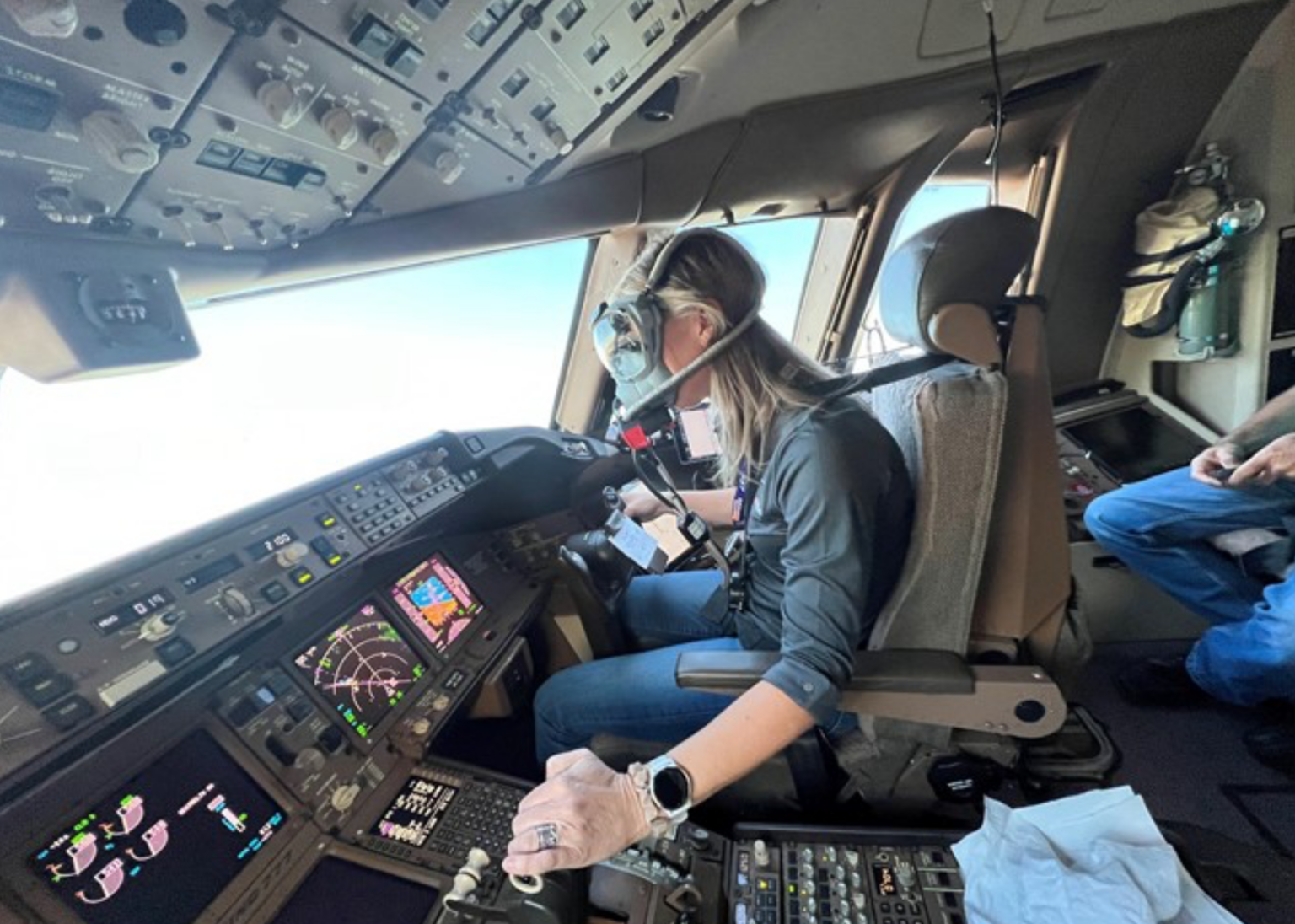Summary SAVED equips oxygen masks with AR displays to help pilots navigate smoke-filled cockpits. The technology has been approved for certain aircraft and has the potential to enhance safety in emergency situations. The addition of SAVED can provide essential flight information during inflight smoke/fire events, improving the chances of a safe landing.
Two US companies are working together to bring a revolutionary piece of kit to pilots all over the world. L2 Aviation is supporting Klatt Works through further certification of a product that could prove to be a lifesaver. The product is the Smoke Assured Vision Enhanced Display (SAVED) Safety System which equips any oxygen mask with an AR display and head-up information.

It could help pilots continue to aviate if the cockpit fills with smoke. SAVED has been in use by FedEx pilots on the Boeing 777 since July 2023, when the FAA awarded the necessary supplemental type certificate. It has since been approved for the Boeing 757/767, and L2 Aviation is working to get it approved for Airbus (A330 and A320), Boeing (737 and 787) and Gulfstream jets (G550 and G650).
It's one of the more interesting applications of AR technology to date; as yet, no commercial passenger airline has revealed an investment in the technology, but as it gathers more STCs, it could begin to have an appeal. The mask addition that could save lives in a smoke event While smoke in the cockpit events are rare, when they do happen, pilots can end up flying almost blind. The SAVED system uses AR to deliver critical flight information to pilots via a see-through display that fits inside a normal oxygen mask.
In addition to head-up display symbology, SAVED can show exterior views from a camera on the aircraft's nose. Two mask displays are provided per aircraft, one for each crew member. If the pilot cannot clearly see the flight instruments or out of the window, the display will present a combination of HUD symbology and nose camera video so they can carry on flying.
In the event of an emergency landing, it's clear to see how this will improve safety. From Google Glass to FedEx pilot safety FedEx has been invested in the project since 2018, when the technology was announced by ODG - Osterhout Design Group, a tech company led by serial inventor Ralph Osterhout, once described by Gizmodo as the 'real-life Q' (in reference to James Bond's equipment supplier). Since 2009, Osterhout has been focused on developing head-worn devices and has already created several different generations of smartglasses.
ODG announced a partnership with FedEx in April 2018, saying the two would work together to develop the technology. “FedEx is pleased to work with ODG on this important innovation in pilot safety technology ..
. We believe it has the potential to enhance pilot safety in emergency situations.” Jim Bowman, Senior Vice President of Flight Operations for FedEx Express (2018) Unfortunately, ODG has since been in financial freefall and is reported to be seeking sales of its IP assets.
Nevertheless, Nate Klatt, who used to be a senior manager at ODG, is committed to taking it forward with the help of L2. Chief Operations Officer of L2 Aviation, Tony Bailey, spoke about the new technology saying, "The Klatt Works SAVED system brings an unparalleled level of safety to the cockpit and we could not be prouder to be a part of the team to help certify the system for use in the global aircraft industry." Making a bad situation better The FAA identifies approximately 900 smoke or fire events in transport aircraft every year.
When that smoke is in the cockpit, or even a full-blown fire, this clearly presents a huge risk not just to the pilots but to the hundreds of passengers and crew behind them. The first step for pilots in the event of smoke is to protect themselves. They apply oxygen masks, after which they can communicate with the cabin crew.
They then implement a diversion to the nearest suitable airport and look for the source of the fire. Significant inflight fires can cause cascading aircraft systems failures, which can be catastrophic. However, less vicious events can involve the crew trying to operate on a flight deck filled with thick smoke and potentially toxic fumes.
Seeing through the smoke with AD and head-up displays could make all the difference to safely making it to a diversion airport. Speaking to AIN , Nate Klatt explained, “Historically, smoke in the cockpit has caused aircraft to divert every 12 to 48 hours, globally. By the time smoke has occluded the ability to see cockpit instruments or out the windscreen, problems can be compounding within the aircraft.
” “The Saved product provides another tool in which flight crew can have a fighting chance of getting their aircraft safely on the ground or ditched.” - Nate Klatt, founder and CEO, Klatt Works.



















